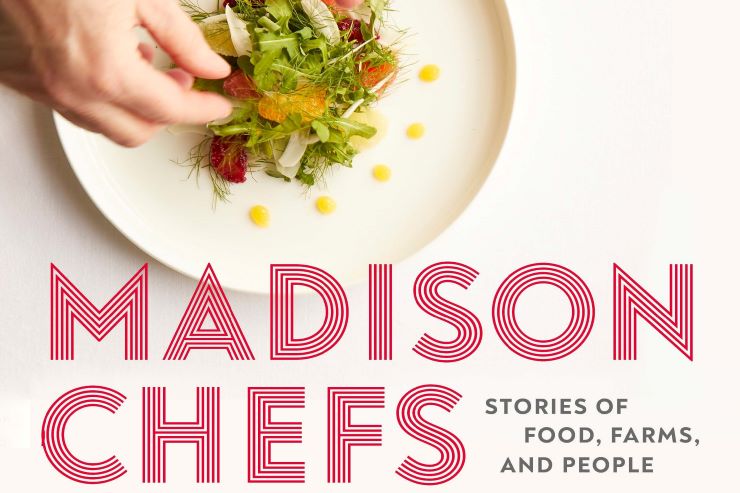Lindsay Christians, food editor and arts writer at The Capital Times and cohost of the Corner Table (a podcast about food and drink in Madison), has authored Madison Chefs: Stories of Food, Farms, and People, set to come out Dec. 21. In this new release, Christians takes readers on an in-depth look at nine Madison-area chefs and showcases why the city endures as a culinary gem.
How did you get your start in food writing and editing? Right place, right time. I was hired at The Cap Times in Madison as an arts writer in 2008, but I love to cook and I always liked writing about food. I filled in here and there, and when our food writer took a buyout in 2011, I added food to my beat.

Where does your passion for food stem from? There’s a quote I like to paraphrase from The Sporkful — I write about food to learn about people. I like how food helps us tell stories. Beyond that, home cooking is a form of self care for me. I cook to show people I love them.
In what ways is the Madison dining scene different now than 10 years ago? Ten years ago, we were collectively coming out of the Great Recession. There was exciting energy around culinary events like SloPig. Tempest Oyster Bar and Stalzy’s Deli opened that year, and so did Salvatore’s in Sun Prairie (that story is one of the chapters in the book).
Now, we’re coming out of a pandemic. New restaurants have shorter, more focused menus to keep costs in check. Finding staff is tougher than ever. We’re seeing restaurants close earlier on weeknights and stay closed more days.
There are still a lot of great ideas from creative people, but it’s harder to execute them because everyone’s working so much.
Why do you think Madison was ahead of the locavore movement? The Dane County Farmers’ Market. It’s turning 50 years old next year and it’s still the largest producer-only market in the country.

How did you go about choosing the chefs you featured in the book? When I started the research for the book in 2017, I looked for people with big ideas, creativity and drive. The chefs in the book all had different paths to the restaurant industry, whether it was through family connections, a love of local farms, or a commitment to sustainability.
Everyone I ultimately asked to follow was reimagining what “Madison food” meant. For Francesco Mangano, that meant making classically Italian food with Wisconsin ingredients. For Gil Altschul, that meant putting a bar in a house; for Tami Lax, that meant constant reinvention of what a farm-focused fine dining restaurant could be. There are 28 recipes in the book, including a Wisconsin-style ramen from Matt Morris and Francesca Hong, and a Wisco-Korean bibimbap from Tory Miller.
What and who are a few of the area’s most up-and-coming restaurants and chefs? The biggest Madison opening of the year has been The Harvey House. Joe Papach and Shaina Robbins Papach are not “up and coming” in the typical sense, since they came from high-profile restaurants on the coasts (The French Laundry, Gramercy Tavern). But it’s exciting to have them here.
I was so happy to see Itaru Nagano get his own spot, Fairchild, with co-chef/business partner Andrew Kroeger. Otherwise the most up-and-coming energy around food is at spots like the P&P Makeshop (attached to Pasture & Plenty). And there’s some fun stuff happening around cocktails at State Line Distillery, Plain Spoke Cocktail Co. and The Settle Down/Oz by Oz.
Pictured at top of page: Heritage Tavern

